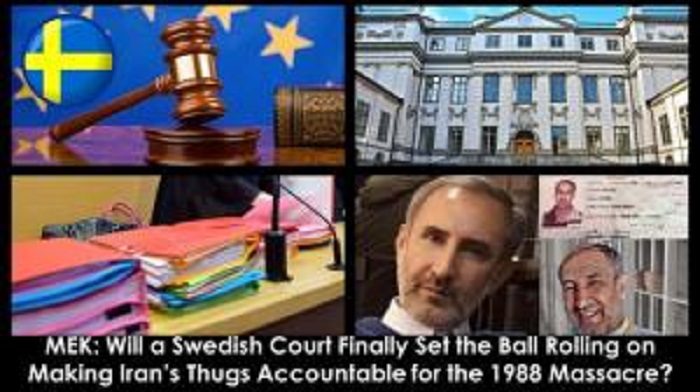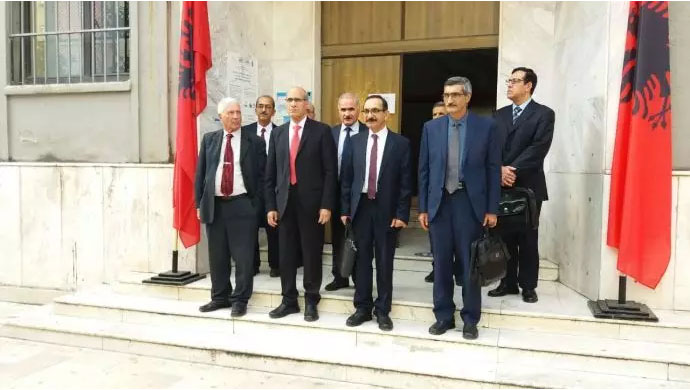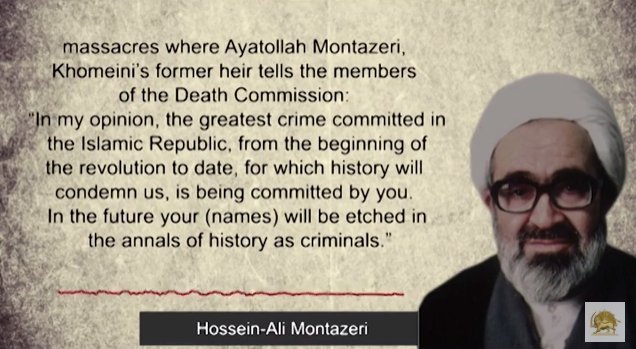
On Wednesday, Hamid Noury, a former Iranian jail officer, testified in his own defense for the sixth time, addressing questions from Swedish public prosecutors on the 1988 massacre in Iran’s prisons and his own role in the massacre. Noury is charged with war crimes and mass murder for allegedly escorting political captives to the “death corridor” at Gohardasht Prison, where they were killed in groups of a dozen or more.
Noury’s defense has alternated from denying the most fundamental facts
Noury’s defense has alternated from denying the most fundamental facts of the case and admitting the crimes committed by the Iranian regime’s courts and the clerical regime. More than a dozen other witnesses testified about their experiences with Noury and his fellow detainees before, during, and after the 1988massacre in Stockholm and Durres, Albania before he took the stand. Despite this, Noury tried to claim that he was on leave from his job throughout the time period in question. He also claimed that Gohardasht Prison did not exist and that the slaughter was “made up and undocumented.”
Noury’s comments reflect Iran’s court system’s intrinsic secrecy, not any real disagreement on the massacre’s severity or scope. Through a network encompassing much of Iranian society, the MEK has meticulously examined the details. In this method, it has identified the locations of mass graves in at least 36 different cities, and international human rights organizations such as Amnesty International have accepted the presence of such graves.

Those projects are part of a far wider cover-up
Those projects are part of a far wider cover-up in which authorities for the better part of three decades banned even the mention of the mass killings. In 2016, a contemporary audio recording featuring the voices of many high-level participants in the massacre, as well as Hossein Ali Montazeri, the only major regime official to voice dissent about the purge of dissidents and the underlying fatwa issued by then-Supreme Leader Ruhollah Khomeini, was released, challenging the conspiracy of silence once again.
In two trial hearings, Hamid Noury addressed both Montazeri and the fatwa, suggesting that Khomeini’s former heir-apparent concocted the fatwa to damage the regime. This evidence, however, contradicts claims made by a number of other regime officials and loyalists who upheld Khomeini’s call for mass executions of dissidents accused of “enmity against God.”

Noury detailed the clerical regime’s use of cruel corporal penalties
Noury detailed the clerical regime’s use of cruel corporal penalties like flogging for minor offenses such as insubstantial lying. “They get 30 lashes, 50 lashes, 70 lashes, or 100 lashes depending on the type of crime,” he stated.
Solitary confinement and white torture were both common strategies for dealing with inmates who flouted prison rules, communicated with one another using Morse code, or gathered in groups for athletics or prayers, according to the former prison official, who noted that both this and flogging were common strategies for dealing with inmates who flouted prison guidelines, communicated with one another using Morse code, or gathered in groups for athletics or prayers.
In recent months, legal scholars have spoken at conferences about the 1988 massacre, arguing that its ostensibly religious motivations qualify it as a case of genocide against religious communities that oppose the regime’s strict theocracy. The conferences in issue were mostly arranged in response to Ebrahim Raisi’s presidential campaign and subsequent “election.”
Raisi’s appointment was part of Khamenei’s policy
Raisi’s appointment was part of Khamenei’s policy of consolidating power among ultra-hard-line leaders, including those involved in the 1988 massacre. Raisi’s involvement was at the highest level, as he was one of four officials appointed to the Tehran execution commission, which oversaw the Evin and Gohardasht prisons.
The trial of Hamid Noury began more than a month later, and it was the first real challenge to that impunity. No other perpetrators of the massacre, which has been considered as one of the worst crimes against humanity since World War II, have faced legal consequences.

Follow Maryam Rajavi’s on her site Twitter & Facebook and follow NCRI (Twitter & Facebook)
and follow NCRI (Twitter & Facebook)
MEK Iran (on Twitter and Facebook)
and People’s Mojahedin Organization of Iran – MEK IRAN – YouTube









